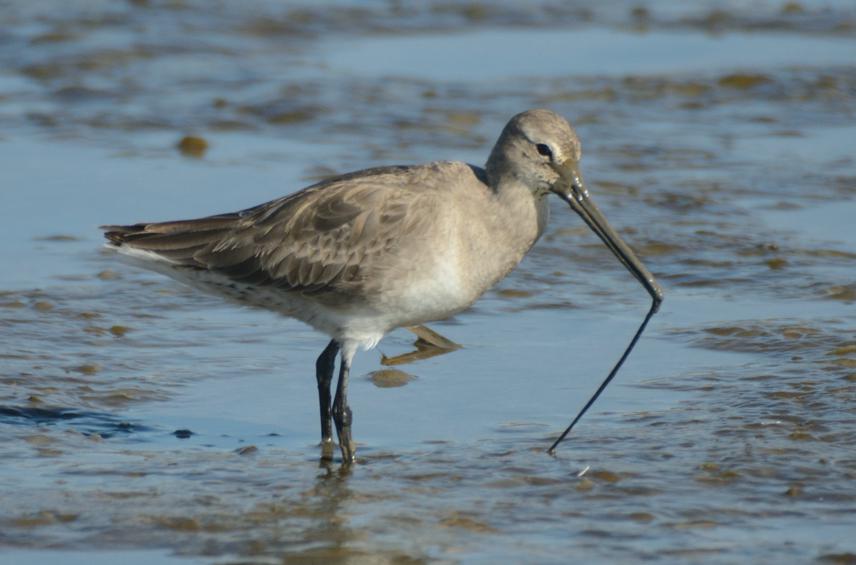Natalia Soledad Martínez Curci
This project will generate updated information on habitat use patterns and trophic ecology of shorebirds. This characterization will be a very important input of any effective management strategy that aims to ensure key environmental conditions at the site.

Hudsonian Godwit.
This work will characterize shorebird habitat quality and habitat use patterns at Samborombón bay, and will raise awareness about the site’s very important role for bird migration in South-eastern South America. There is currently very little scientific information on these topics and the Project will produce data necessary for the implementation of conservation measures. Although research will target all shorebird species at the site, emphasis will be placed on two conservation-concerned species: the Red Knot (Calidris canutus rufa) and the Hudsonian Godwit (Limosa haemastica), the “rufa” population of the Red Knot has declined sharply in the last few years. In the case of the Hudsonian Godwit conservation status is unclear and there is a general lack of information about its basic biological attributes. Because shorebirds depend upon invertebrates communities as their main food source, it is also important to characterize these assemblages and the soil characteristics they respond to. All this information must be available to conservation planners in order to develop effective measures for Samborombón bay and its shorebirds.
Samborombón Bay has been recognized as key site for migratory birds (identify as: Provincial Nature Reserve; “Wetland of International Importance"/RAMSAR convention; “Important Bird Area”/BirdLife International and "Site of International Importance"/Western Hemisphere Shorebird Reserve Network). Despite all this national and international recognition it currently lacks effective protection. The unique characteristics of the site attract not only birds, but also people. Unplanned tourism development creates disturbances such as the alteration of benthic fauna due to sand compaction resulting from vehicular traffic. This process results in the deterioration of key trophic supply and highlights the need for public awareness efforts directed to the general public and particularly to all relevant stakeholders involved in the management of the area.
The two key contributions of this project will be: an improved knowledge on invertebrate and shorebird ecology and improved levels of public awareness related to Samborombón Bay’s importance and current threats. The plan is to produce substantial scientific data and to educate all relevant actors as a means of increasing the conservation chances for the site and its birds.